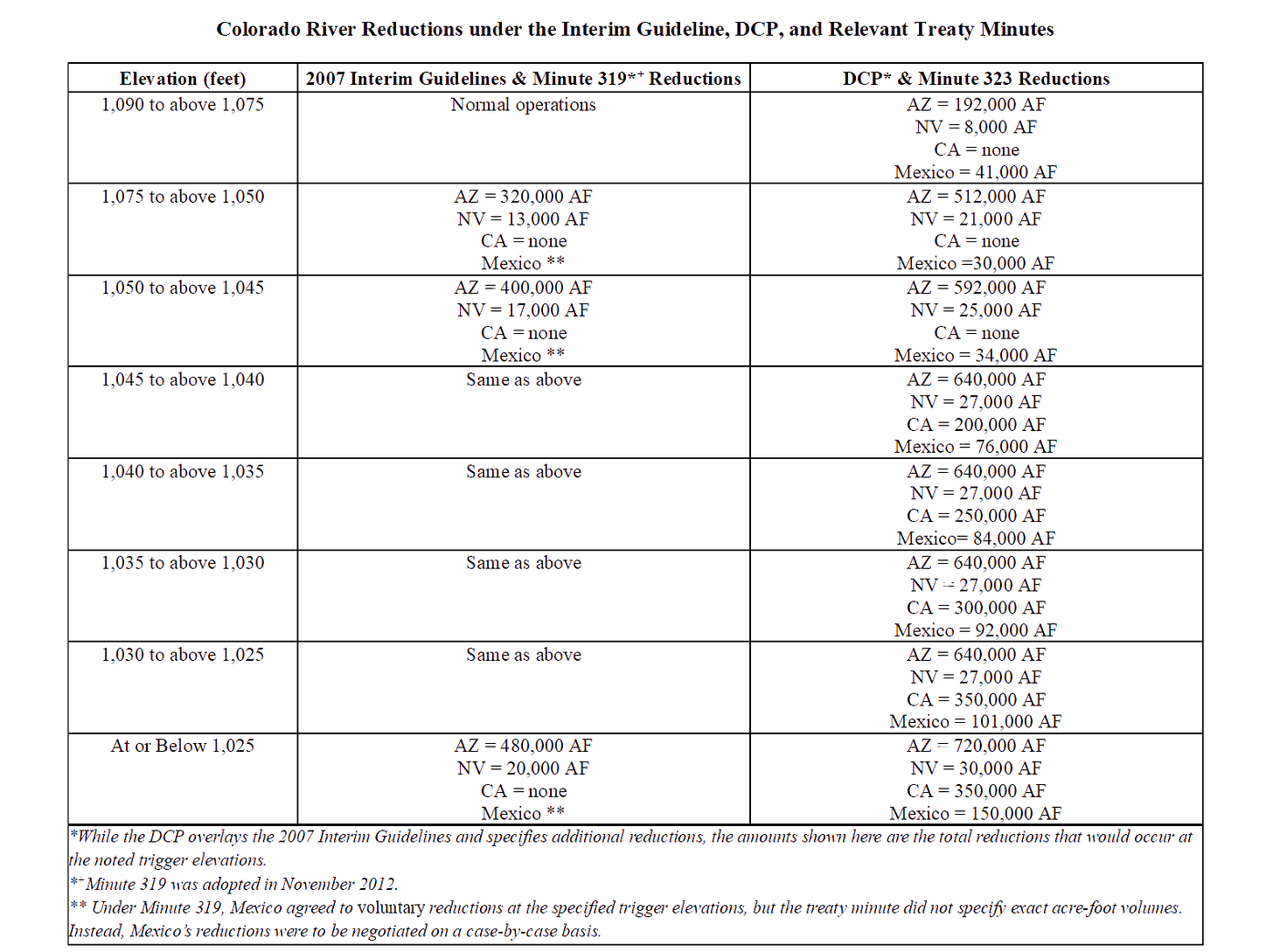Shortages and Cutbacks—Nearly Two Decades of Colorado River Management History
Answering NRDC’s Concerns about the Colorado River—Part 2 of 3
In May, a coalition of environmental organizations led by NRDC sent a petition to the Bureau of Reclamation. The press release about the petition presents false information about allocation reductions in the Lower Basin. In short, they claim that there aren’t any by incorrectly stating, “Currently, Arizona, Nevada, California and their water utilities with Colorado River water rights receive 100 percent of their allocations annually regardless of snowpack and river flow conditions.”
Anyone knowledgeable about the Colorado River knows that this is false.
Under the 2007 Interim Guidelines, California was not subject to any reductions—but Arizona and Nevada were. When the Interim Guidelines were being prepared, the probability Lake Mead falling below 1,025 feet was a remote 3%. In 2015, when Rodney T. Smith characterized a drawdown to that level as a Black Swan Event—a low probability event with a major effect for which people are unprepared—the probability had risen sharply to 30%. Even with the prescribed cutbacks under the Interim Guidelines, if Lake Mead’s elevation fell to 1,025 ft., allocations to the Lower Basin States and Mexico would exceed the volume in Lake Mead by about 40%. Simply put, the Interim Guidelines did not cut back enough. (For Rodney T. Smith’s discussion characterizing a drop in Lake Mead’s elevation to 1,025 ft. as a Black Swan Event, see “Obama Administration’s Objectives for the Colorado River Basin,” Journal of Water December 2015).
In this context, the Upper and Lower Basin prepared their Drought Contingency Plans, which were adopted in 2019. The Lower Basin DCP overlays the Interim Guidelines and implements cutbacks sooner and includes California in the cutbacks, allowing for a greater level of delivery reductions during extreme shortages. Also in 2019, Mexico also agreed to cutbacks. (See table).
While there were no formal, detailed federal guidelines for apportioning shortages prior to 2007, cutbacks have been part of the operational criteria during shortage conditions for nearly two decades. Actions that have been taken since the DCPs were adopted will be covered in Part 3.
For information about the petition read Part 1:
Are Colorado River Water Supplies Being Wasted?
The short answer is no. There are legal and contractual measures in place to prevent unreasonable use.


